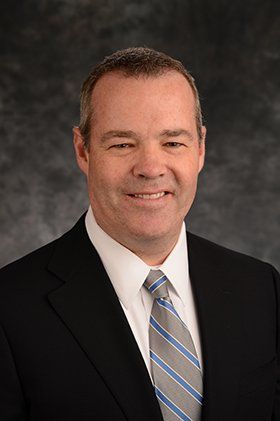Top Advice from Tech Leaders at Leading Healthcare Systems
Here’s how to keep your technology roadmap on track.

Lantzy

Raman

Betts

Browne

Leading the technology department of a healthcare organization comes with unique challenges. While technology trends in other industries can move at lightning speeds, striking a balance between innovation, corporate culture, and security concerns can lead to technology lags in healthcare.
To minimize disruptions and ensure healthcare organizations can move quickly when new technology innovations arrive, strong partnerships and communication between technology leaders and other C-suite executives are key.
“Packaging IT strategy and IT initiatives into language that is consumable and actionable by the C-suite is an under-rated skill set among CIOs and their chief medical informatics partners,” says Mark Lantzy, senior vice president and chief information officer of Indiana University Health in Indianapolis.
“It’s our responsibility to provide accurate information and educate the decision makers about the integration requirements, support costs, risks, and security implications of their decisions,” says Jayashree Raman, senior vice president and chief information officer at Cooper University Health Care, in Camden, New Jersey. “This enables them to be an informed decision maker as they continue to grow and run the business.”
Steve Betts, senior vice president and chief information officer of the Health Care Services Corporation-a health plan that serves Illinois, Montana, New Mexico, Oklahoma and Texas-says that although the technology team at Health Care Services Corp. is embedded in all departments throughout the health system, the department has increased its strategy and development with front lines of business, including group and retail departments.
“This is because the capabilities that we bring to market to our members through technology are increasingly important to our customer-facing parts of the business. This is more so than it has been historically,” Betts says.
“In healthcare, our purpose and mission is to keep people healthy. The clinicians are the ones that actually do that work,” says Paul Browne, chief information officer at the Henry Ford Health System in Detroit, Michigan. Close relationships with the financial leadership are also essential, since technology initiatives are expensive.
In order to build those relationships, Browne is active in several committees within the organization, including the capital allocation, health system strategic plan, and health system quality committees.
“We don’t have very many technology-specific meetings,” he says. “What I try to do is use other forums and opportunities to educate people about the technologies that are important to the topic we’re discussing.”
Related: Top 5 Disruptive Trends to Watch in Healthcare
He also helps temper expectations when other health system leaders read about new technology trends.
“Usually there’s a lot of hype around new technology and a lot of fanciful thinking about all the problems that technology will be able to solve,” he says. “Many times new technology can solve a lot of specific and focused problems, but it’s not a silver bullet. I think it’s incredibly important to educate the C-suite about what’s realistic with new technology and what’s not realistic, so that they can calibrate their expectations appropriately.”
Making technology a priority
Betts holds monthly meetings that discuss the success and challenges of technology-based strategies being deployed within the organization. But he also regularly discusses with senior leaders how technology can improve the business. Most of those conversations center around data analytics, artificial intelligence, and digital tools.
“Focusing on business outcomes and possibilities that can be driven through technology is the most important thing,” Betts says. “It’s not a point-in-time conversation about technology. It’s really an ongoing conversation about the role technology needs to play in strategy, in addition to supporting other non-traditional strategies.”
Betts adds that his team has created an interactive PDF called Health Tech Radar that discusses current technologies, those that are important to the future, and those being piloted by the organization. It is updated regularly and is available to all employees and executives to help them stay abreast of the technology strategy.
“What we’ve done is make this a dynamic tool so that each technology has a video explanation and our point of view on how we would use it in healthcare,” Betts says. “We also have some information that ties to broader themes in healthcare, not just one kind of technology. It’s an interactive, immersive tool that executives and other employees can use to really get their wheels turning on how emerging technology can drive business in the future.”
Raman holds IT governance meetings regularly to educate leaders on technology and get input from across departments. “If virtual visits are part of the strategic plan, we need to bring forward the different technology options to support the strategic plan,” she says. “As technology continues to be used for competitive advantages, it’s all the more important for helping the C-suite connect the dots.”
Donna Marbury is a writer in Columbus, Ohio.
In the Scope of Virtual Health and the Future of “Website” Manner, Per Ateev Mehrotra
August 10th 2023Briana Contreras, an editor of Managed Healthcare Executive, had the pleasure of catching up with MHE Editorial Advisory Board Member, Ateev Mehrotra, MD, MPH, who is a professor of healthcare policy at Harvard Medical School and an Associate Professor of Medicine and Hospitalist at Beth Israel Deaconess Medical Center.
Listen